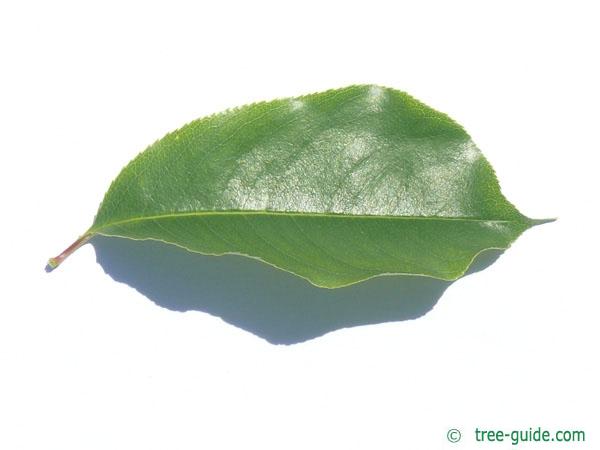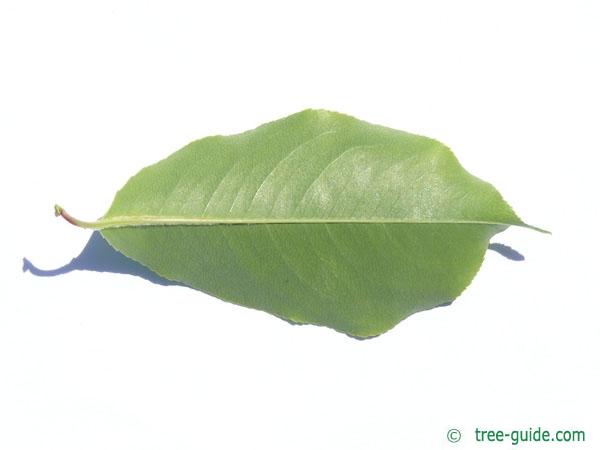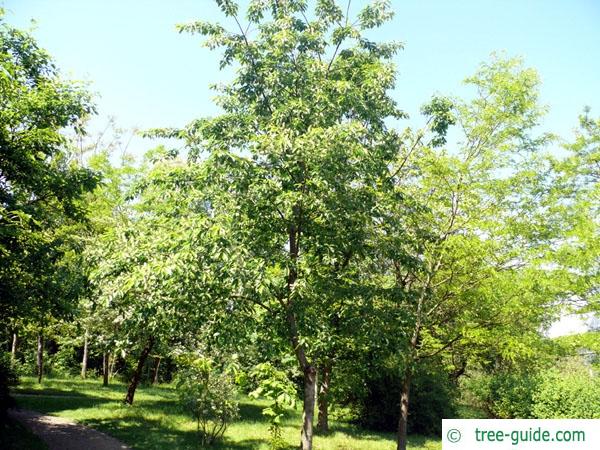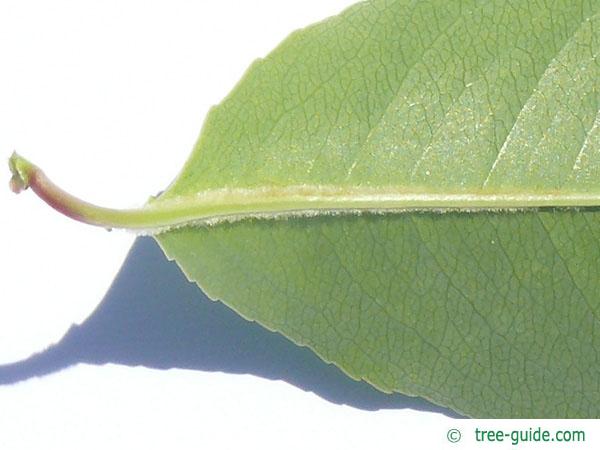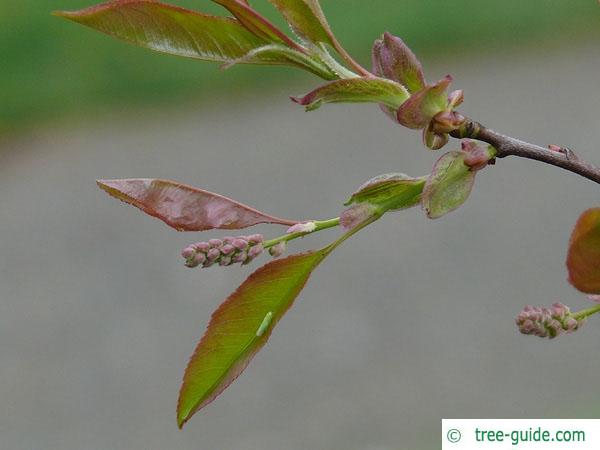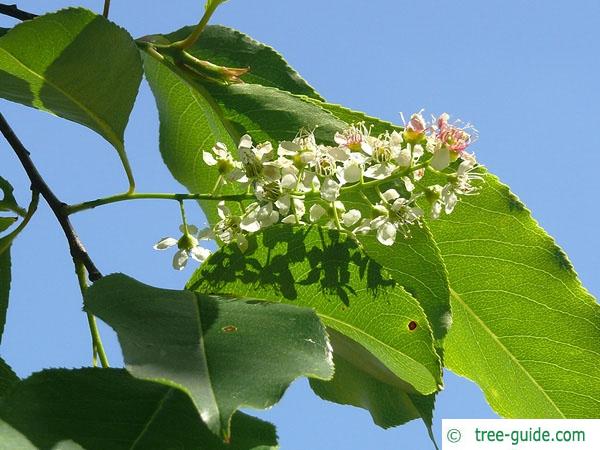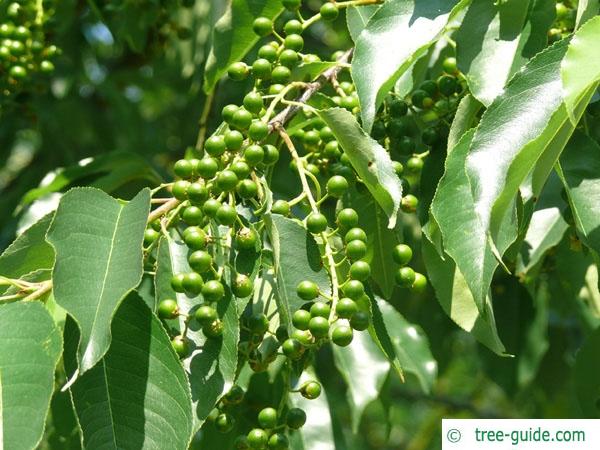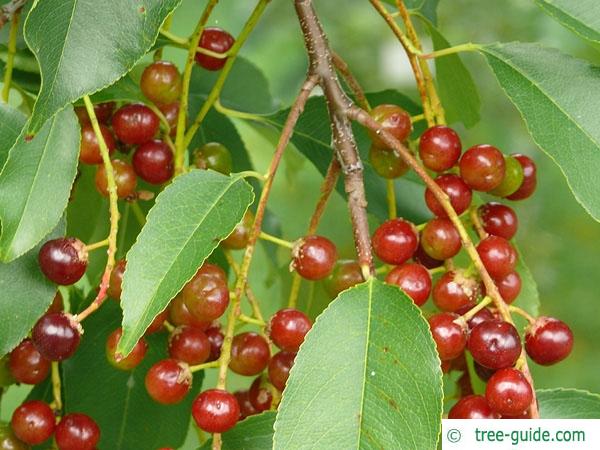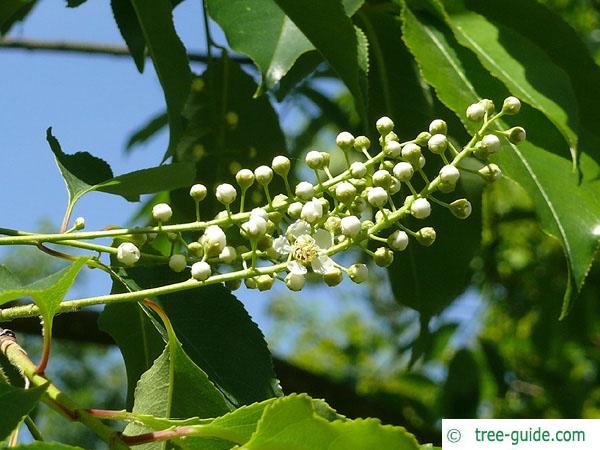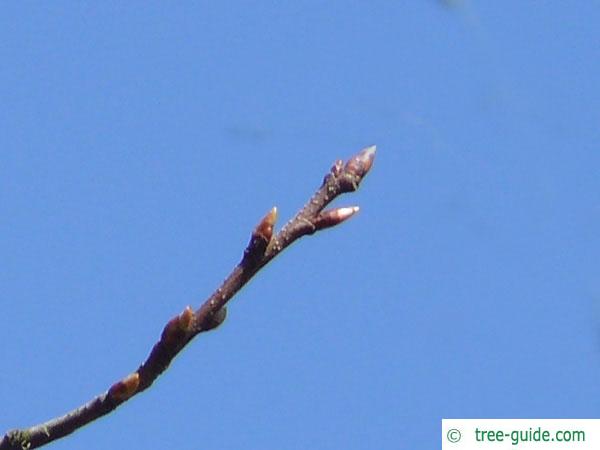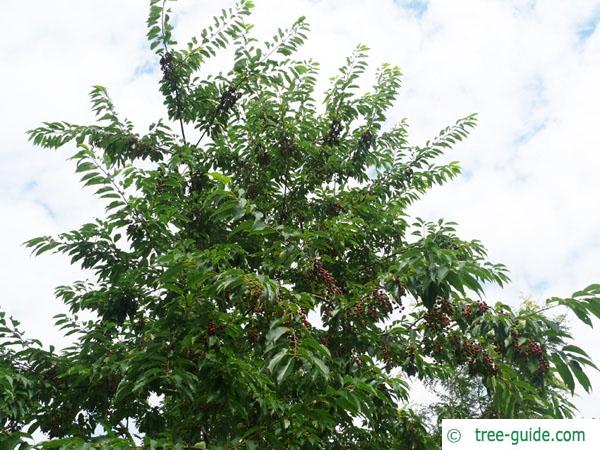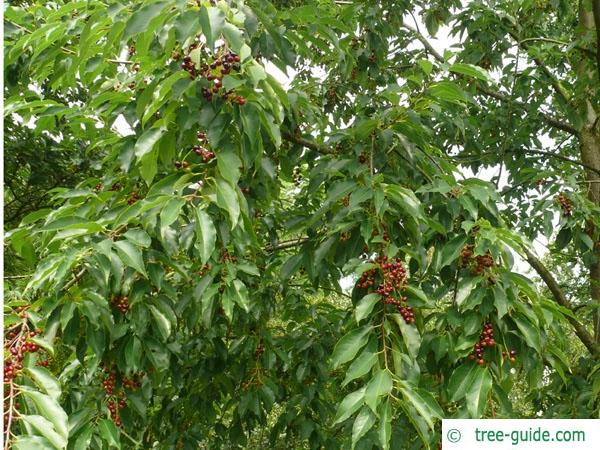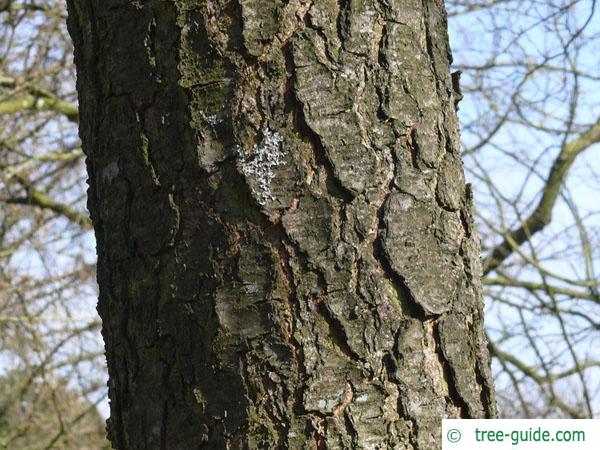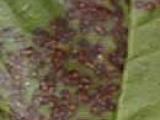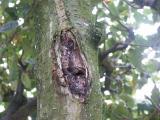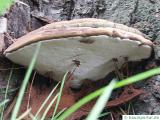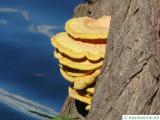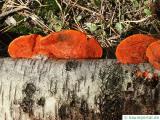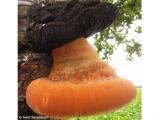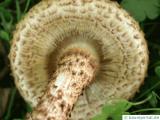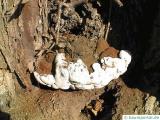Basisdaten
The Black cherry is native to eastern North America and has spread to Central America. In Europe, the cherry can be found as a cultivated tree in gardens.
Tree profile
The leaves Black cherry are elliptic-ovate, glossy, tough with two green glands on the petiole. The center leaf vein is brown tomentose. The leaf margin is serrated.
The white flowers are in cylindrical, long inflorescences. The flowers smell pleasant.
The fruits are ovoid, first red then black. The fruits taste bitter-bitter but are non-toxic.
Die Zweige sind braun-grau mit Lentizellen. Die Knospen sind rotbraun leicht zugespitzt und treten am Zweigende gehäuft auf.
America: forest tree, pioneer plant Europa: garden-parks tree.
Cherries additional information
overview leaves | overview blossoms | overview fruit | overview trunkoverview winter | | overview trees







